2025 GWM Haval H6GT PHEV Review: New plug-in hybrid packs in the value and EV range to make life tough for BYD Sealion 6, Mitsubishi Outlander PHEV
The new GWM Haval G6GT has the option of a plug-in hybrid system that takes EV-only motoring to another level.
The mid-sized five-seat SUV can cover up to 180km on electricity before reverting to its petrol engine.
And while it’s not the cheapest plug-in hybrid on the market, the H6GT packs plenty in for the money.
READ MORE: GWM PHEV frenzy: Haval H6GT, Cannon Alpha ute and H6 to target Toyota
READ MORE: Hybrid SUV attack! Look out Toyota, updated GWM Haval Jolion slashed by $4000
READ MORE: 2024 GWM Tank 700 PHEV: 385kW 4×4 is a rapid plug-in LandCruiser and Patrol rival
All of which sets the scene for a PHEV stoush between mid-sized heavyweights such as the BYD Sealion 6 and Mitsubishi Outlander PHEV, as well as the newly arrived Jaecoo J7 SHS.
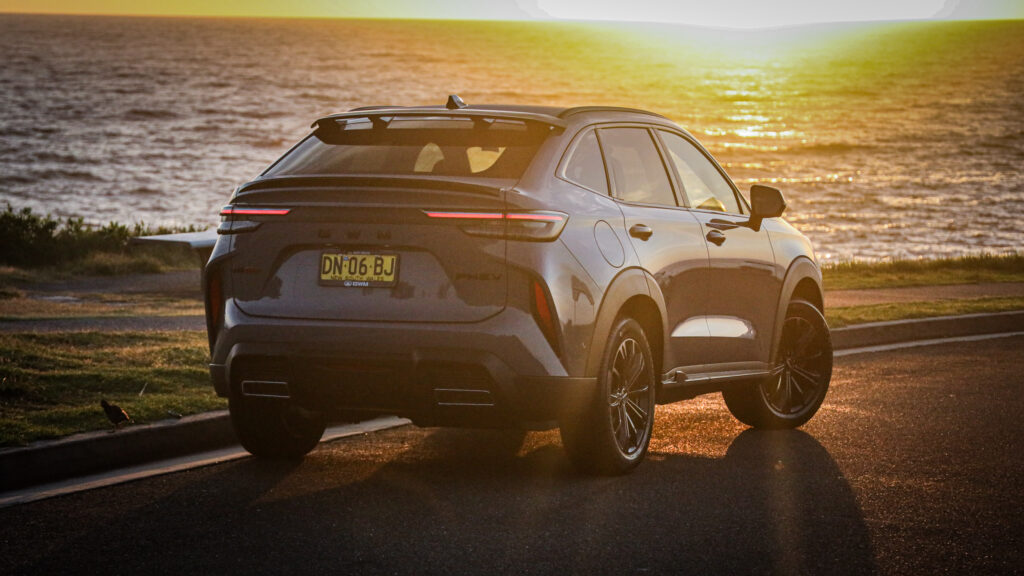
2025 Haval H6GT Ultra PHEV price and equipment
The Haval H6GT is priced from $53,990 drive-away, which makes it one of the more affordable PHEVs on the market.
It comes packed with gear, including a panoramic sunroof where the front section also slides back to reveal fresh air, head-up display, 360-degree camera, ambient lighting, dual-zone ventilation and 19-inch alloy wheels shod with Michelin tyres.
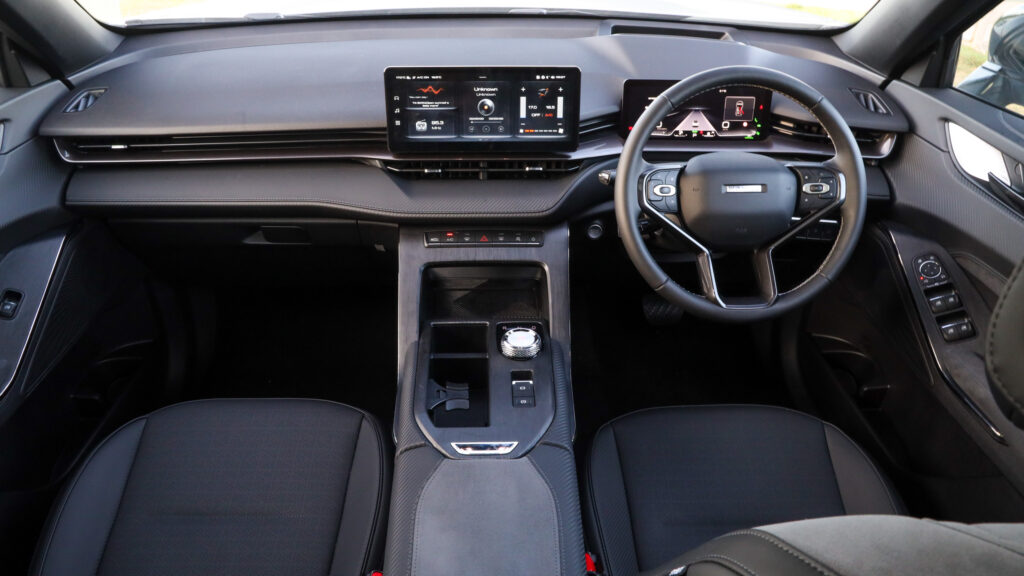
There’s also a 10.25-inch digital instrument cluster and 12.3-inch central infotainment screen. That screen incorporates Apple CarPlay and Android Auto, but for both you need to plug a phone in rather than have it connect wirelessly. That makes the wireless phone charger slightly less useful.
The front seats are electrically adjustable (but no memory function) and have heating and ventilation. The seat trim is also leather-accented, which translates to patches of the real hide but a decent smattering of leather-look stuff.

Either way, it looks classy enough for the price point and teams with other cabin materials – including a carbon fibre-inspired weave and metallic speaker grilles – to make for a classy space.
As for GT part of the name, it refers to the shape, which has a coupe-inspired body that falls away at the rear for a more dramatic look. Haval also sells a regular H6 with a more traditional SUV shape, a broader model range and sharper pricing.
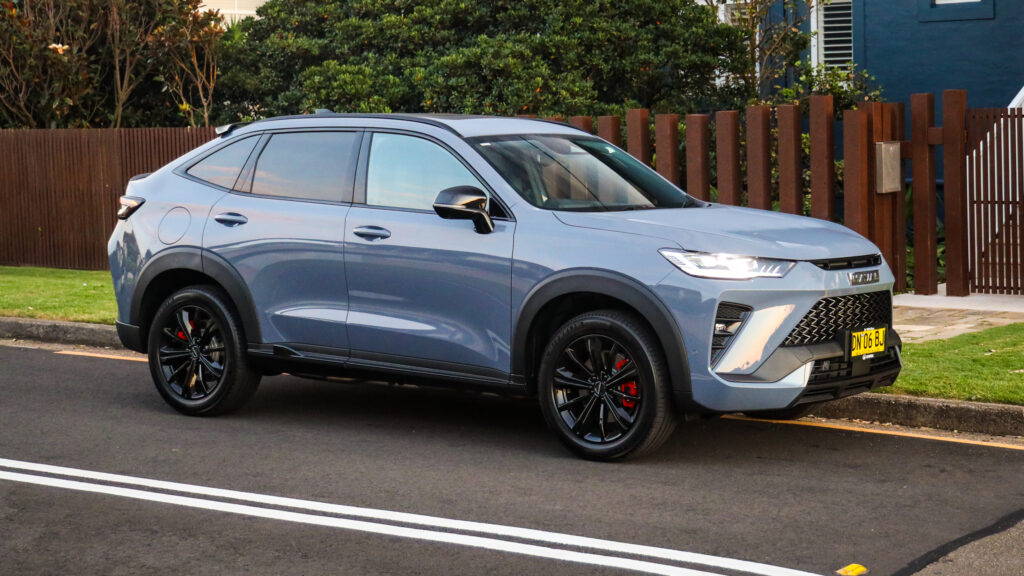
Of course, the really expensive part of the H6 is its battery, which at 35.43kWh is more than 20 times the size of the battery in the Toyota RAV4 Hybrid. But it’s also around half the size of a battery in many full EVs.
2025 GWM Haval H6GT: What we think
There’s lots to like with the GWM Haval H6GT Ultra PHEV, but there’s also plenty of room for improvement.
The best part is the plug-in hybrid system, which relies more on electrons than petrol.
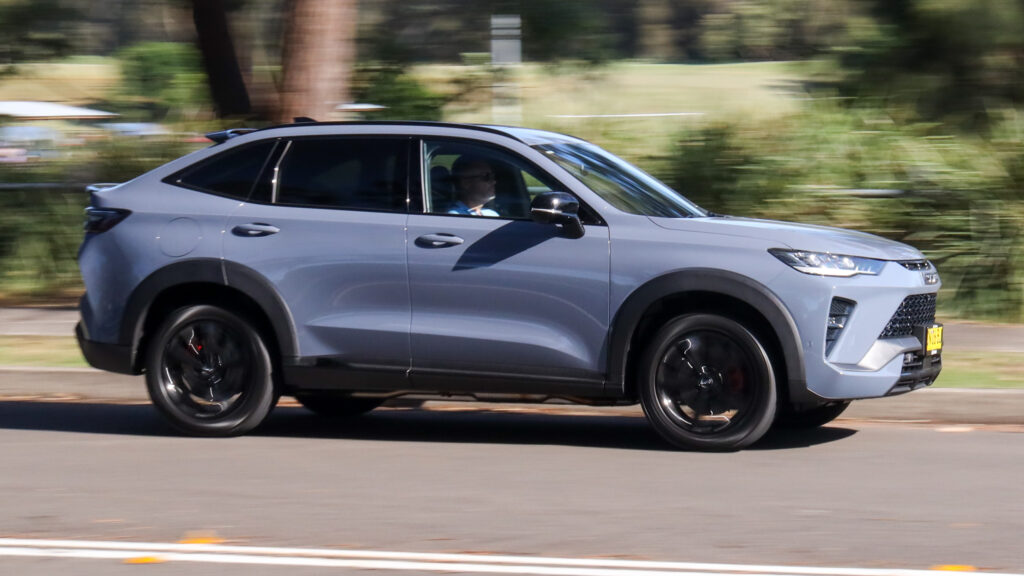
The front motor makes 130kW and the rear motor 135kW. It’s a lot of combined electrical power – and there’s still an engine to come into play, too. The 1.5-litre turbocharged petrol engine musters a modest 110kW and 230Nm.
Add that engine and GWM claims a full 321kW as well as a hefty 762Nm of torque. Those outputs are up around the outputs of some supercars.
Not that the H6GT ever feels that muscular.
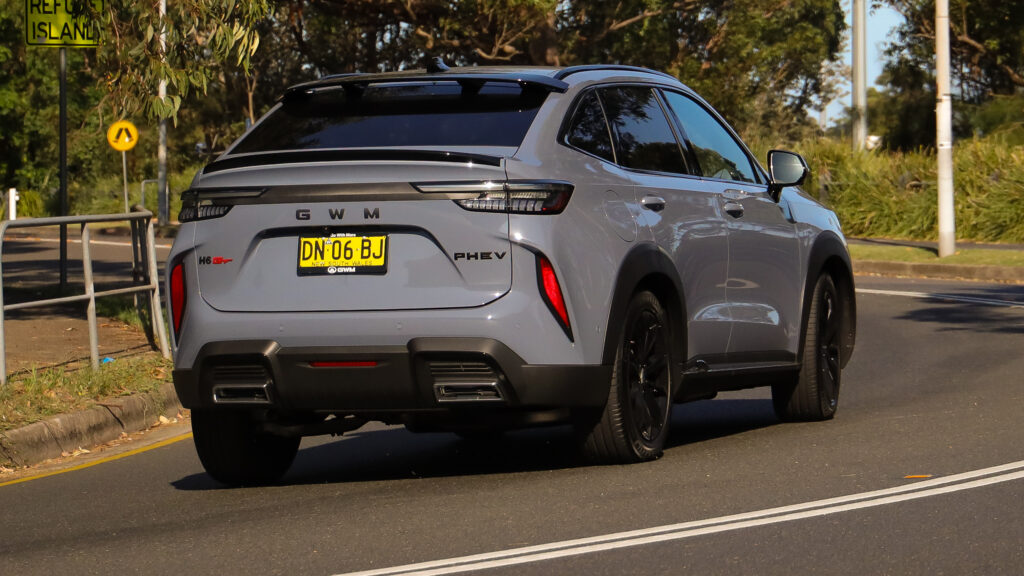
We never had any sense of 762Nm rumbling away, and 321kW seems optimistic too.
That may in part be because of how it works. Instead of a traditional gearbox there’s a two-speed transmission that relies heavily on electricity below about 80km/h and makes the engine more prominent north of that.
Maybe at very high speeds some of that hefty torque may kick in, but we got no sense of anything like it.
That said, when everything is singing it’s a deceptively brisk SUV, in a straight line at least.
There are also various drive modes, but they can only be accessed via the touchscreen once you’ve left the phone mirroring screen. You can then either select the car icon then delve into the Driving menu and change the drive mode setting or – an easier option – swipe down from the top of the screen to reveal a menu of commonly used functions.
It’s still a few more touches than is ideal for adjusting how the hybrid system performs.
Adjacent to that setting in the menu is the Power Mode setting, which allows you to choose between EV, EV prioritised and Intelligent Hybrid driving.
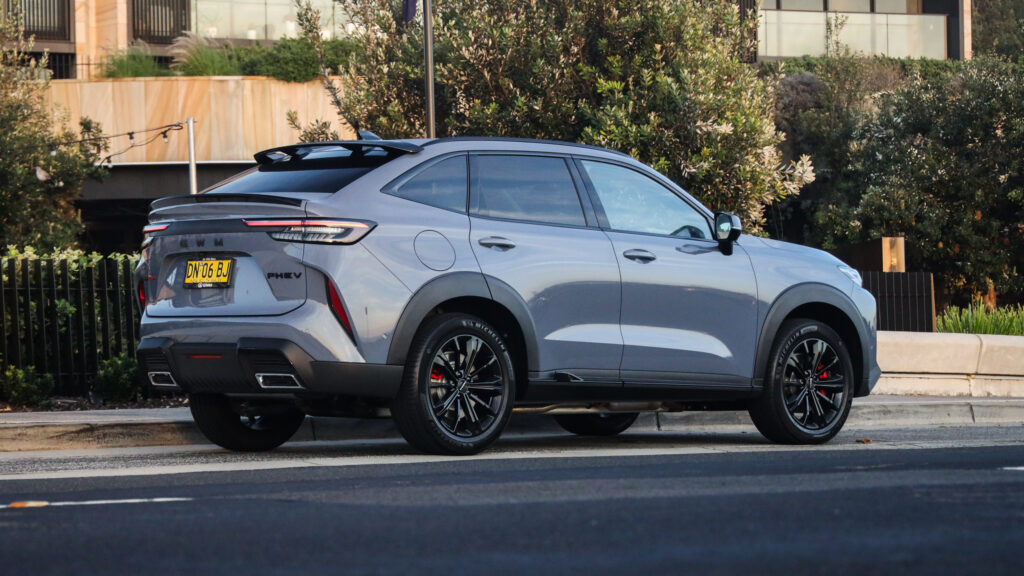
The EV mode seems the most useful because it takes the petrol engine out of the equation, provided you have enough charge.
It means you’ve still got 265kW to play with, which is almost double what a garden-variety medium SUV makes. In other words, plenty.
That said, the electric motors do their best work up to about 60km/h.
Beyond that the gearing means you’ll be pushing the throttle to the floor more often to get modest acceleration.
Again, no biggy, but it’s good to not get too carried away by those big combined claimed outputs.
And there’s also plenty of kilos to deal with. At 2075kg the H6GT is 395kg heavier than the petrol-only model. It’s a nuggetty mid-sized SUV.
That weight also means it uses more electricity than a similarly-sized EV.
Still, with consumption around 20kWh per 100km it should cost you less than $7 per 100km from a home charge, or less if you’re using solar or an EV electricity plan.
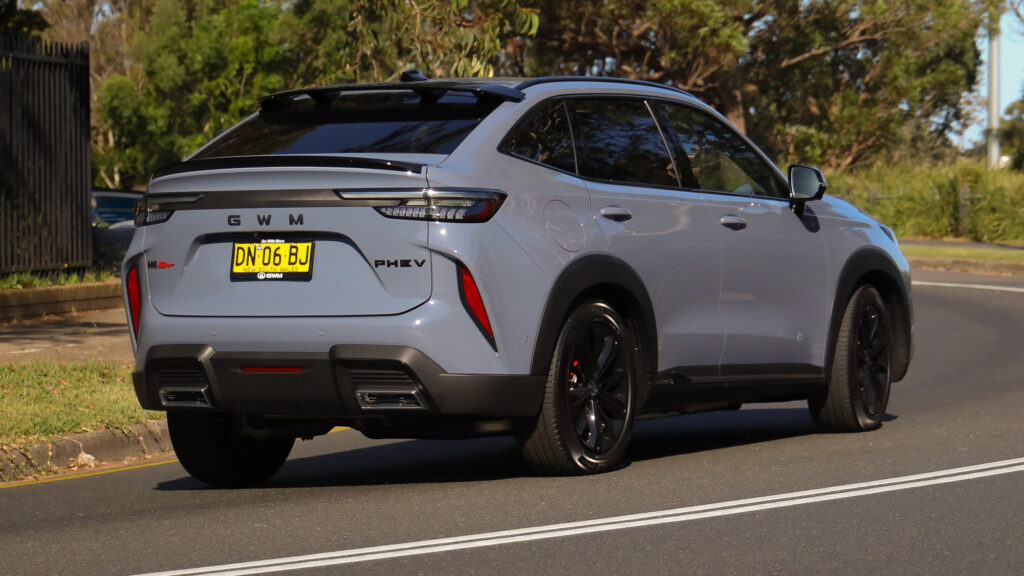
Speaking of charging, the H6GT can only charge at 6.6kW using a home AC charger (many EVs take up to 11kW). But with a standard wallbox that means a full charge in a little over six hours. Plug into a standard powerpoint and you’re looking at more like 18 hours.
Faster DC charging can be done at up to 48kW, but because the car throttles the charge depending on the temperature and state of charge it’ll take around an hour.
The official fuel figure according to the government test is 0.8 litres per 100km, which like all other PHEVs is a number you’ll likely never achieve.
When running in EV mode you’ll use no fuel and when running as a hybrid (when the battery is depleted, for example), GWM suggests you’ll use about 5.4L/100km.
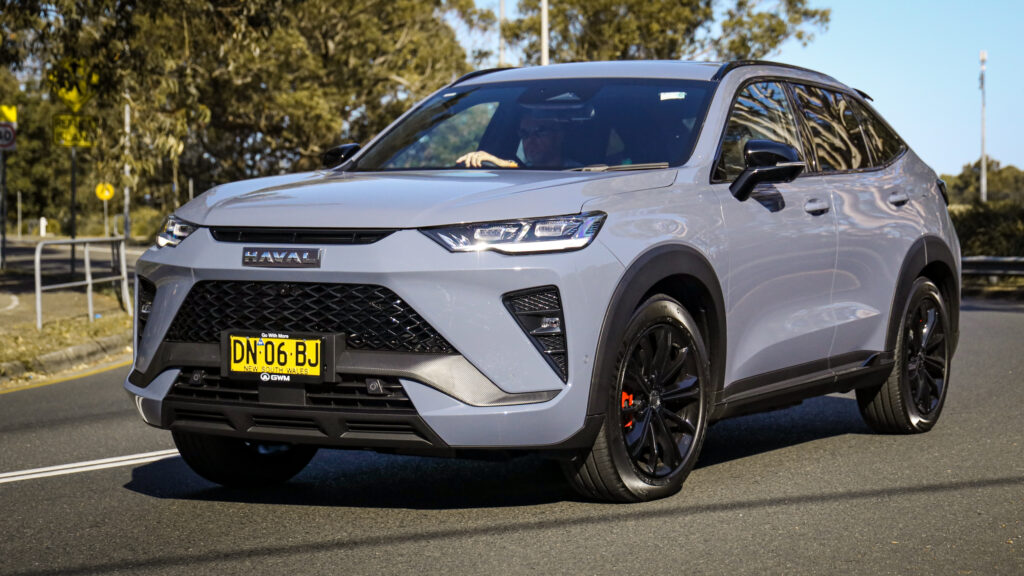
That’s still decent and puts it in the mix with regular hybrids (non-externally rechargeable) such as the Toyota RAV4.
The H6GT isn’t as slick through corners and in dealing with bumps as it is in scorching off the line.
It’s riding on decent 19-inch Michelin tyres, but the suspension doesn’t control wheel movement particularly well. Throw more bumps into the equation and it feels a tad uncoordinated as it tries to sort things out.
It naturally tempers any enthusiasm through bends.
And it pays not to push things too hard as the front-end can soon run wide.

Now, time to talk infotainment. The H6GT’s central screen needs work.
Or, more specifically, the whole car needs more buttons.
There are some fixed buttons to activate the front and rear demisters, the hazard lights and to bring the camera up on the screen (something that also happens once you select reverse).
Then there’s an on/off button for the ventilation system and an AC off button, at least one of which seems redundant.
If you want to adjust the fan speed or temperature you’ll need to go back to the main menu or delve into menus. For commonly used functions it can get frustrating.
You can also talk at the car via the voice recognition, but a button would achieve the same result quicker and easier (we also tried to adjust the drive modes via the voice recognition and the car had no idea what we were talking about).
2025 GWM Haval G6GT Ultra PHEV: Verdict
There’s plenty of room for improvement with the GWM Haval H6GT.
Top of that list would be its infotainment system functionality and driving dynamics.
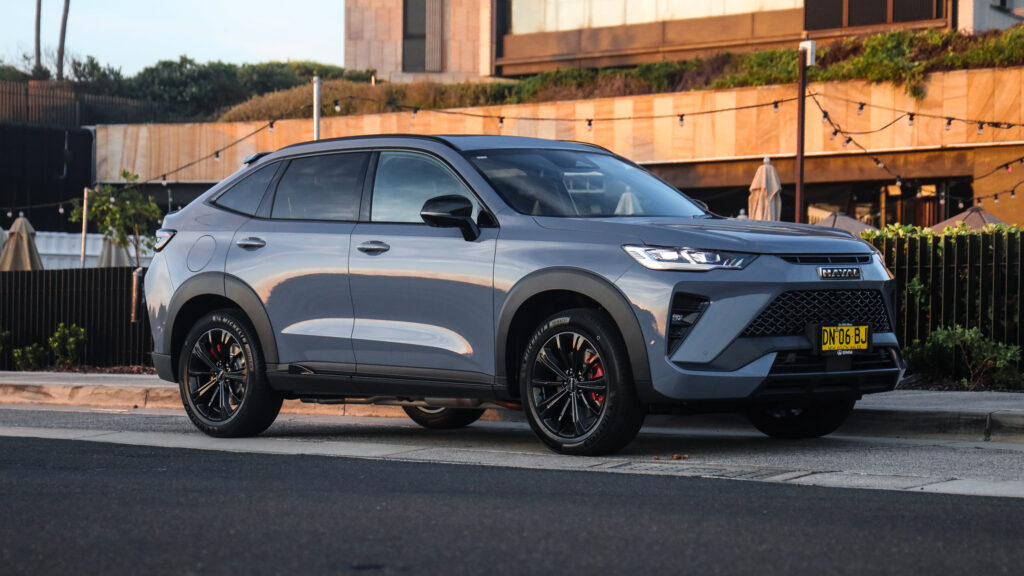
But there’s also loads to like, including the well-presented cabin and effective plug-in hybrid system.
It adds to the impressive and increasing depth in the PHEV market – and gives a viable in-between offering on the road from regular hybrids to EVs.
Score: 4/5
2025 GWM Haval H6 Ultra PHEV specifications
Price: $53,990
Basics: PHEV, 5 seats, 5 doors, SUV, AWD
Range: 180km (electricity)
Battery capacity: 35.43kWh
Battery warranty: 8 years/unlimited km
EV energy consumption: 20kWh/100km
Powertrain: 1.5-litre 4-cylinder petrol-turbo engine, 110kW/230Nm
Motors: 1 front 130kW and 1 rear 135kW
Combined outputs: 321kW/762NM
AC charging: 6.6kW, Type 2 plug
DC charging: 48kW, CCS combo plug
0-100km/h: 4.9 seconds

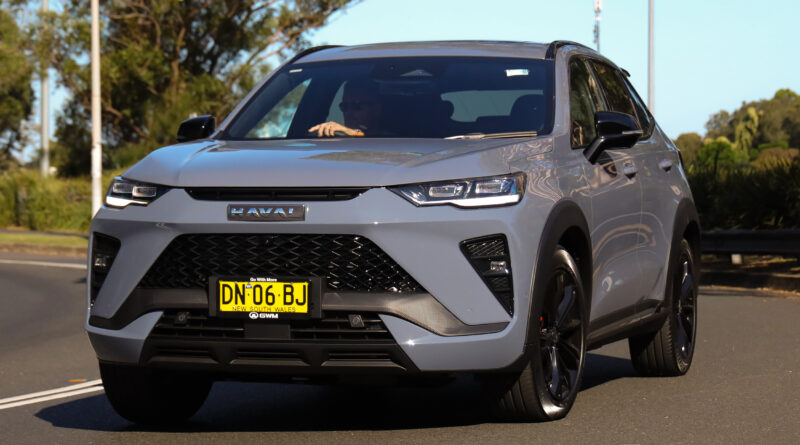

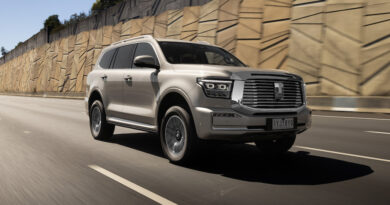
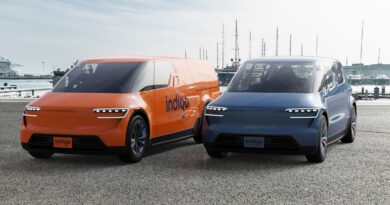
Hi. Regards your review of the Haval HT PHEV, Was there mention of maximum range in your story?
These government fuel figures give these cars incredible range, but I’m keen on your thoughts on real world distance.
This claim from Google is crazy.
Combined Range (theoretical): Over 1000km, considering the 55-litre fuel tank and official fuel consumption rating of 0.8L/100km.
Good review though, thank you.
My experience was around 130-140km of real-world EV range, which is pretty good and will certainly cover off most people’s daily driving. As you point out the PHEV also has a 55-litre fuel tank and we were using something like 6.0L/100km once the battery had been depleted. So while we didn’t put it to the test – keeping in mind that trip computers may not always be accurate – our experience suggests something close to 1000km would be achievable using electricity and petrol. As for the 0.8L/100km official fuel figure, don’t get too excited by that. It’s done to a government test (manufacturers have to quote that figure as part of local compliance) and is not in any way indicative of how much fuel you’ll actually use. While GWM doesn’t have to do it, in the brochure for the H6GT it includes an expected fuel figure for “Condition B”, which is when the battery has been drained. It’s a smart way to do things because it reduces the chance of a customer coming back asking why they’re using a whole lot more fuel than the official fuel figure states.